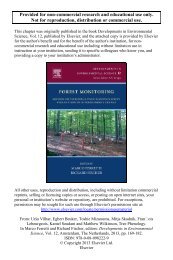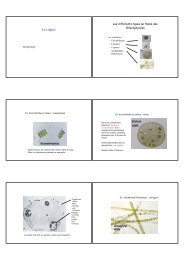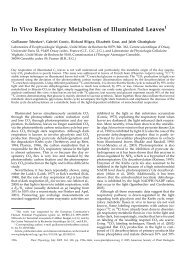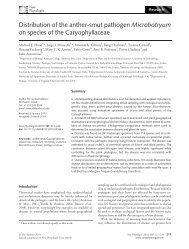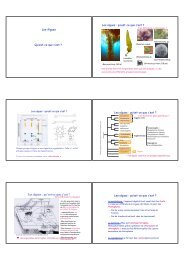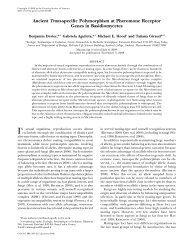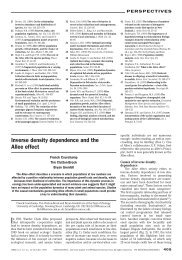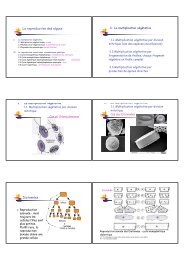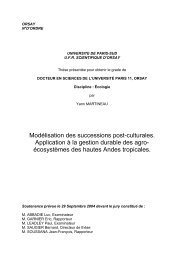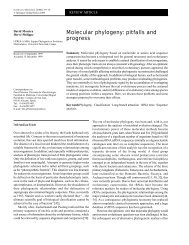Mapping winegrape quality attributes using portable fluorescence ...
Mapping winegrape quality attributes using portable fluorescence ...
Mapping winegrape quality attributes using portable fluorescence ...
You also want an ePaper? Increase the reach of your titles
YUMPU automatically turns print PDFs into web optimized ePapers that Google loves.
Goutouly et al., 2006b). This indication of higher levels of readily available water in clayey easternparts of the plot (cf. Figure 1) is associated to a larger leaf LAI (larger vigour) (Figure 4), thus largershading of clusters, but also larger grape yield (not shown). In that region there would be therefore lessflavonols in grape skins (consequence of shading) but a lager skin anthocyanin content (cf. Figure 6)and lower chlorophyll content attesting for more mature grapes. This is usually the case for Merlotgrown on clayey soils (C. Van Leeuwen, personal communication), as confirmed here.Implementation of Multiplex for viticulture.Assessment of berry mass (size), the most widespread test used for grape <strong>quality</strong> distributionin vineyards showed an important sampling problem. The maps of the derived from 30 berry samplesand 100 berry samples were very different and none showed spatial correlation (Table 3). It isinteresting to note that the maps of the two major <strong>quality</strong> <strong>attributes</strong> for red-wine grapes, anthocyaninsand sugar content, have quite different patterns indicating a multi-parametric control that needs furtheranalysis. Fluorescence sensing and mapping shown here can advantageously be used to define zonesof high and low grape <strong>quality</strong> (Bramley and Janik, 2005), to verify the technical opportunity indexes(Tisseyre and McBratney, 2008) or to be included in the definition of management zones (Bramleyand Janik, 2005; Taylor et al., 2005). But more importantly, it has generated sets of data that, providedadequate statistical treatment and incorporation in a physiological model, would yield understandingon the relationship between remotely sensed vegetative indices and soil-based estimation of readilyavailable water and grape <strong>quality</strong> <strong>attributes</strong>.ConclusionsWe showed that a spatial structure of grape <strong>attributes</strong> exists at the chosen experimental plotand that it can be assessed (mapped) by the Multiplex optical proximal crop sensor. We will pursuethe acquisition of optical sensed <strong>quality</strong> <strong>attributes</strong> on the same plot in the next years. This will permitus to analyse the physical basis of <strong>quality</strong> <strong>attributes</strong> spatial variability and hopefully to understand theunderlying controlling physiological processes. Multi-annual data will allow us not only to verify theconstancy and robustness of the spatial patterns but also to perform in-depth statistical analysis, likeco-krigging of optical and wet chemistry data.AcknowledgementsThe authors would like to thank Kamel Soudani for advices on geostatistical analysis.8



